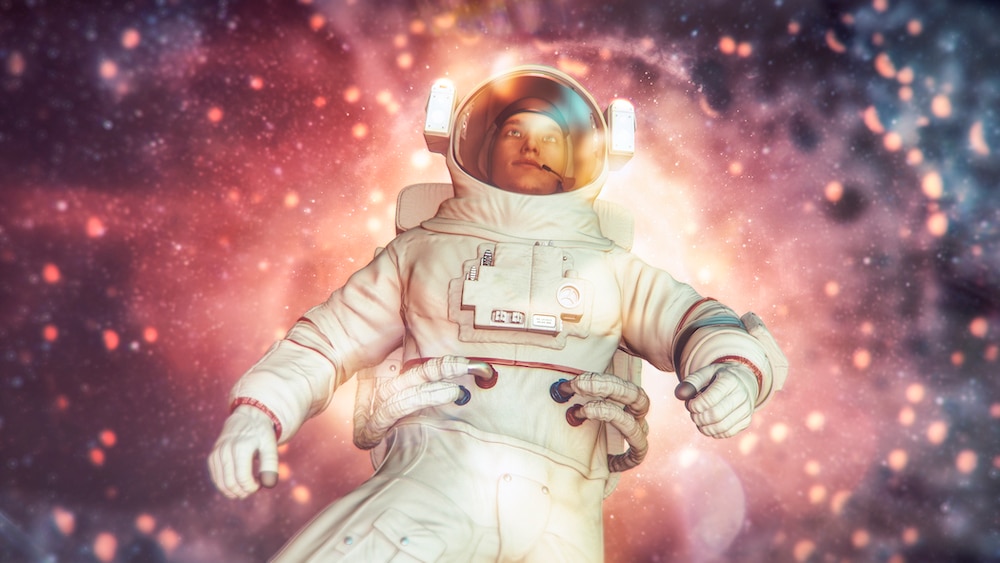Create a free profile to get unlimited access to exclusive videos, sweepstakes, and more!
Could astronauts float around without losing muscle? Hibernating creatures might know how
An answer for microgravity muscle loss? Look down to Earth.

Astronauts still haven’t figured out what else besides gravity suits and exercise machines could prevent the otherwise inevitable loss of muscle in zero-G.
Things that hibernate don’t just go into a state of suspended animation (which would be another useful thing for astronauts). While they are unconscious, their bodies can morph nitrogen so they can use it to create proteins for new tissue. Because microgravity holds back protein synthesis, this could have huge implications for future space travel, especially extended missions to the Moon and beyond that would otherwise wear down an astronaut’s body.
While it had been theorized that animals which hibernate can pull this off, researcher Matthew Regan of the University of Montreal has finally proven it. He led a study, published in Science, that explores exactly how creatures like ground squirrels use their gut microbes to convert nitrogen from bodily waste — the urea found in urine — into something useful. This is known as urea nitrogen salvage (UNS) and may be the answer to at least one spaceflight problem.
“If UNS in hibernators facilitates the synthesis of muscle proteins that are suppressed in humans during spaceflight, determining whether there is overlap in these proteins is an important step toward evaluating the potential of UNS as a microgravity countermeasure,” he told SYFY WIRE.
Regan’s lab has just received funding from the Canadian Space Agency to look further into this, but hang on to your spacesuit. How are hibernators literally able to keep themselves in shape while they are asleep? As the research team saw in ground squirrels they observed in the lab, urea in the blood migrates to the gut, where microbes break it down. Enter metabolites. These are usually small molecules that come out of metabolic processes. Metabolites carry urea nitrogen back into an animal’s system, and tissue protein is produced from that nitrogen.
Could urea nitrogen salvage be translated to humans? Possibly. The human body actually does do it on a much smaller scale than an animal in hibernation, so there would need to be an artificial alteration of the process that would produce enough urea nitrogen to save muscles from degrading. There are some similarities between the digestive systems of squirrels and humans. This might mean that the rate-limiting step, or slowest step in a reaction that ultimately determines the result of that reaction, in squirrels is the same as that of humans.
“I think that amplifying this process in humans will be possible,” Regan said. “But it's too early to say to what extent it might be amplified. The high complexity of the gut microbial environment will require a lot of careful testing before this could be done safely in humans.”
What that rate-limiting step is has to be figured out before UNS inspires any futuristic treatments. Regan already has ideas, since there could be an overlap between proteins that are built up by hibernation but degrade in spaceflight. Hypothetically, if the slowest part is the phase when microbes take urea apart so they can grab nitrogen from it, he thinks the human gut will need more of the microbes that do this. Probiotics or changes in diet might be able to make those microbes multiply. For now, the rate-limiting step is still unknown.
Say that UNS effective enough to prevent muscle loss can be induced in humans. Does our species have the potential to hibernate on long journeys to Mars and deep space? This is something Regan also wonders about. The metabolic rates of ground squirrels can plummet by 99%, which leaves the animals’ body temperature close to that of their surroundings. The human body is just not made for that. At about freezing, the heart starts to fail. That threatens all our other systems. However, other hibernators, like bears, enter a more survivable state of torpor.
“Perhaps one day it will be possible with the appropriate support and monitoring equipment,” he said. “But for the foreseeable future, I believe the way forward is by inducing 'shallower' states of metabolic depression that keep body temperature above 86 degrees Fahrenheit.”
So maybe we won’t be seeing those ultracool hibernation pods from Alien anytime soon, but you never know.


























